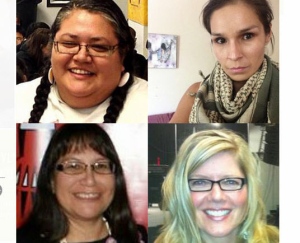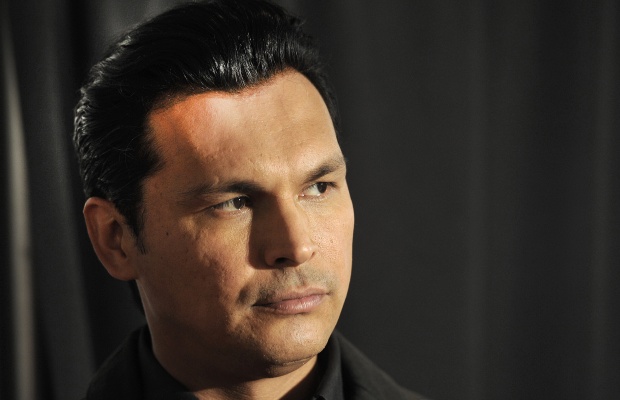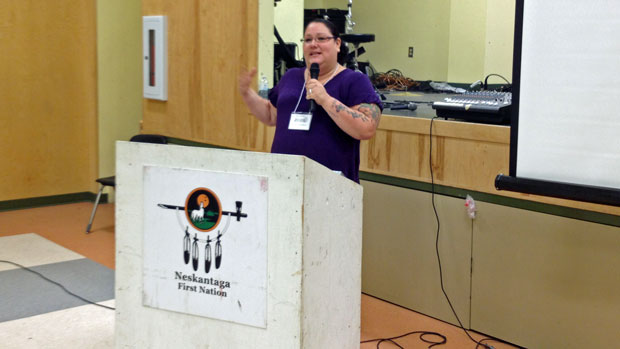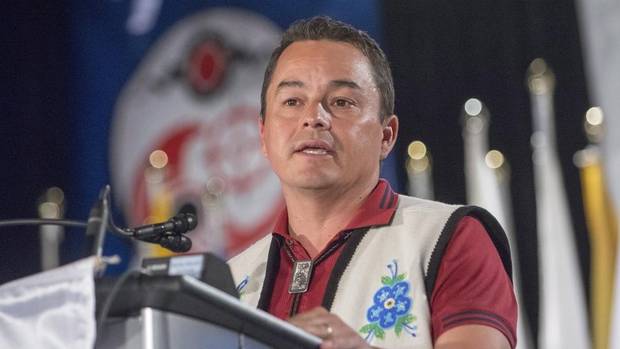By Dylan Ruiz and Joseph Smooke, 22 October 2013 , Source: The Real News Network
First Nations and environmental activists interrupt Enbridge’s pipeline plans.
TRANSCRIPT:
DYAN RUIZ, REPORTER: Hundreds gathered in the cold Toronto rain to oppose the proposal for the oil pipeline called Line 9B operated by energy company Enbridge. Canada’s National Energy Board (NEB) has been asked to approve Enbridge’s project that would enable them to bring oil from Alberta’s tar sands to 600 kilometers of pipeline running through Ontario and Quebec.
The protest was supposed to coincide with the final day of the board’s hearings in Toronto, which heard public testimony about the Line 9 proposal. But Enbridge decided not to go forward with their final arguments the day of the protest, citing security concerns.
After the public testimony the day before given by Amanda Lickers of the grassroots collective Rising Tide Toronto and Six Nations of the Grand River First Nations, the spectators erupted in a chant, rose to their feet, and began round-dancing. NEB representatives promptly left the room, bringing cheers from the crowd.
AMANDA LICKERS, RISING TIDE TORONTO AND SIX NATIONS OF THE GRAND RIVER: I think that Enbridge is just trying to buy time because they were really intimidated by my presentation. You know. I mean, they need to formulate their arguments. And I think it’s completely ludicrous that they can just violate the terms of the entire process and just ask for time due to security concerns. I mean you’ve seen this rally. It’s being led by indigenous people, drummers, by traditional people, by women. There’s children here. You know, it’s not a confrontational rally. It’s a celebratory time to come together, and show, and have our voices heard.
RUIZ: One of the speakers of the protest was Canadian singer Sarah Harmer, who has been an outspoken activist against Line 9, which runs through her family’s farm.
SARAH HARMER, SINGER-SONGWRITER, AFFECTED LANDHOLDER:Thank you to everyone who’s come from across the province today, who got onto buses in Kingston and Hamilton and Waterloo, wherever you came from.
RUIZ: The 40-year-old pipeline runs from Sarnia, at Ontario’s border with Michigan, through the heavily populated Toronto area, to Montreal, where the oil will be refined. Approval of the proposal would allow Enbridge to use this pipeline to carry more than the light crude it currently transports. Line 9 would be transporting the controversial diluted bitumen, or “dilbit”, a heavy crude coming from the Alberta tar sands.
Another part of the proposal includes increasing the amount Enbridge would be licensed to transport by almost 30 percent to 300,000 barrels per day.
People at the rally who spoke out against the Line 9 proposal have said it poses huge environmental risks, especially from the transportation of dilbit from the tar sands.
AMARA POSSIAN, RISING TIDE TORONTO: The pipeline isn’t built for tar sands oil, and it’s a really old piece of infrastructure, so the risk is higher for spills. It’s basically like sandy peanut butter going through the pipeline, corroding the inside. And when it does inevitably spill, it’s very difficult to clean up.
RUIZ: A similar Enbridge pipeline, Line 6B, failed near Kalamazoo, Michigan, in 2010, spilling diluted Alberta tar-sands bitumen. It was the largest surface spill in U.S. history and spewed 3.3 million litres of oil into the Kalamazoo River. The spill came close to contaminating Lake Michigan, the drinking water for over 12 million people. Three years later, the widespread environmental damage has not been fully assessed and Enbridge is still cleaning it up.
Enbridge spokesperson Graham White said to The Toronto Star, “Enbridge’s goal is zero incidents, and no spill is acceptable to us … Line 9 has been a safe and well-performing line for the past 38 years, and we are taking all necessary measures to ensure that remains the case for the people of Ontario and Toronto.”
Protesters are concerned that a spill like the one that happened in Michigan could happen along areas of Line 9 that crosses rivers such as the Credit, Humber, and Rouge that flow directly into Lake Ontario.
Contamination of the rivers that flow into Lake Ontario would be disastrous. Four-point-five million people in the Greater Toronto area rely on Lake Ontario for their drinking water. This is a concern not only of the protesters, but of the city of Toronto as well in the hearings this week. The city attorney also outlined concerns about the lack of specific plans for sites directly above Line 9. This includes schools, parks, apartment buildings, and a retirement home and subway station.
When it was built nearly 40 years ago, the pipeline tracked through remote areas, but now directly threatens heavily populated neighborhoods in and around Canada’s largest city. At Toronto’s Finch Subway Station that sees over 100,000 riders riders on a typical weekday, the pipeline runs less than two metres below the sidewalk and 60 centimetres above the subway structure.
The Finch corridor is a neglected part of Toronto. This resident of the northern Toronto neighborhood Jane and Finch was at the protest. He said the risks associated with Line 9 are an unwelcome addition to what the neighborhood already has to deal with, such as poor government investment in essential services like education and transit.
OSMAN ANWER, RESIDENT OF JANE AND FINCH: Jane and Finch is an example of bad mid-century public policy planning. They overbuilt a lot of public housing units and basically left them to rot. So Line 9 is just more–another topping on the shit sandwich we already have.
RUIZ: Marginalized communities and indigenous people carry some of the worst repercussions of resource extraction, transport, and processing.
Many First Nations and other indigenous people from the Idle No More movement were present at this protest. They say the NEB hearings do not fulfill the legal requirement for the federal government to consult with First Nations on the pipeline project. Only the federal government can consult with the First Nations on the proposal, not Enbridge or the NEB. They say the adequate consultations were not done when the pipeline was built and is not happening now.
HEATHER MILTON LIGHTENING, INDIGENOUS TAR SANDS CAMPAIGN: When it comes to each community, each one of them is a sovereign nation. And under the UN Declaration on the Rights of Indigenous People it talks about “free, prior and informed consent”, and that means the right to say no, the right to have consultation in our own languages in a way that makes sense for our own people, and to be informed of both the negative and the positive.
RUIZ: To Heather, like many First Nations, the answer to Line 9 is no because the dangers are too high. The protestors at this rally emphasized that action against the Line 9 pipeline is a growing movement that doesn’t end with this protest or this week’s hearings.
SYED HUSSAN, COMMUNITY ORGANIZER: They can try and flip that switch, they can try and push that dilbit, but we will swamp them at every turn.
RUIZ: One of the lead organizers of the protest outlined what’s coming up.
SAKURA SAUNDERS, RISING TIDE TORONTO: This process of community organizing–you know, we’re going to use this power that we’ve developed to both push for a provincial environmental assessment, and if that fails also, you know, swamp Enbridge, you know, wherever they are in terms of physically defending the land and stopping this project from happening.
RUIZ: The Board has already approved Enbridge’s proposal for one part of the pipeline last year, Line 9A, which runs from a pumping station near Sarnia to close to city of Hamilton. The National Energy Board plans to make their decision about Line 9B by this January.
This is Dyan Ruiz for The Real News Network.
 Derrick on December 10th 2013 WC Native News
Derrick on December 10th 2013 WC Native News



![A Royal Proclamation day feast brought out over 300 to the anti-fracking blockade in Rexton, New Brunswick in early October. [Photo: Miles Howe]](https://www.tulalipnews.com/wp/wp-content/uploads/2013/11/image_of_blockade.jpg)





 ROCHELLE JOHNSTON
ROCHELLE JOHNSTON


